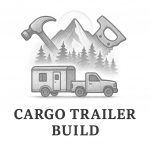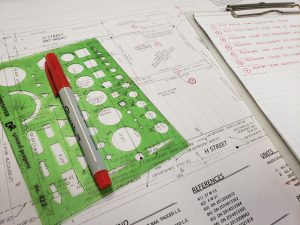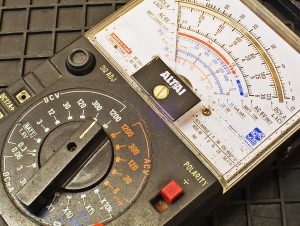Structural Modifications in a Cargo Trailer Conversion: Cutting, Reinforcing, and Trying Not to Regret Everything
So, you’ve got yourself a shiny box on wheels. Congrats! That cargo trailer has infinite potential—just as soon as you start cutting into it, reinforcing it, and making sure it doesn’t collapse under the weight of your Pinterest dreams.
Structural modifications are one of the first big steps in converting a cargo trailer to a camper, and they can be the most intimidating. Once you make that first hole in the metal, there’s no going back. This is where planning meets power tools… and sometimes, therapy.
In this post, we’ll cover what structural modifications are, why they matter, and how to do them right—whether you’re on a beer-and-plywood budget or you’ve got champagne tastes and a contractor on speed dial.
What Are Structural Modifications?
In the context of a camper build, structural mods refer to any physical change you make to the trailer’s original frame, skin, or shell. Basically: the stuff that could void your warranty or make your trailer leak if you screw it up. (Which you won’t. Probably.)
These mods include:
-
Cutting in windows, roof vents, or skylights
-
Reinforcing the roof or walls for weight-bearing features
-
Building internal framing for walls, beds, or cabinetry
-
Upgrading the floor or insulating the underside
-
Adding external racks, decks, or stairs
Let’s break each down with some budget tips, premium options, and a healthy dose of realism.
1. Cutting In Windows and Vents
Why it matters: Ventilation = life. Light = happiness. Nobody wants to live in a dark metal box that smells like yesterday’s socks.
Budget option:
-
Order RV windows on eBay or from salvage yards.
-
Use a jigsaw or angle grinder and cut carefully (measure twice, cut once, then measure again in a panic).
-
Seal with butyl tape and silicone. Pray to the waterproofing gods.
Premium option:
-
Buy brand-new, double-pane RV windows with trim rings.
-
Hire someone to cut and install them professionally.
-
Add MaxxAir or Dometic fans with remote control and rain sensors because you fancy.
Pro tip: Practice your cuts on scrap first. Otherwise, your “window” might turn into a “giant patch with regrets.”
2. Roof & Wall Reinforcement
Why it matters: That 12V A/C unit or solar panel isn’t going to support itself. Cargo trailer roofs are often built to keep rain out—not to hold 100+ pounds of gear and two raccoons.
Budget option:
-
Add internal cross-supports using 1×1 or 2×2 steel or wood.
-
Use construction adhesive and self-tapping screws into the ribs.
-
Mount items to the new internal frame rather than the flimsy skin.
Premium option:
-
Weld in additional steel tubing across the roof ribs.
-
Use rivnuts and structural aluminum framing.
-
Install a pre-engineered roof rack system.
Warning: Don’t assume your roof can hold weight because you stood on it once and it didn’t collapse. That’s how insurance claims are born.
3. Framing Interior Walls or Bulkheads
Why it matters: Framing supports insulation, walls, cabinets, and your sense of sanity.
Budget option:
-
Use 1×2 furring strips attached to trailer ribs with self-tapping screws.
-
Add cross-bracing where needed.
-
Keep it modular and minimal.
Premium option:
-
Use welded aluminum tubing for lightweight strength.
-
Integrate wall cavities for wiring and plumbing channels.
-
Go full van-life influencer with tongue-and-groove cedar, recessed LED lights, and floating shelves.
Pro tip: Pre-build sections on the floor before mounting. It’ll save time and prevent accidental “artistic” framing.
4. Floor Upgrades & Underside Work
Why it matters: Your feet (and insulation) deserve better than raw plywood and road dust.
Budget option:
-
Use rigid foam board or mineral wool between the existing joists.
-
Lay peel-and-stick vinyl or use leftover flooring from your cousin’s kitchen remodel.
-
Skip spray foam unless you enjoy scraping it off your skin for three days.
Premium option:
-
Replace the subfloor with marine-grade plywood.
-
Add underbelly armor or belly pans to protect against road debris.
-
Install radiant floor heating if you’re feeling spicy (and rich).
Reality check: You’ll spend more time staring at the floor than you think. Make it something you won’t hate barefoot at 3am.
5. External Add-ons: Racks, Decks, and Other Madness
Why it matters: Sometimes you need to haul more stuff—kayaks, spare tires, or your entire midlife crisis.
Budget option:
-
Bolt on a rear hitch rack or roof rack from Craigslist.
-
Reinforce from inside with backing plates.
Premium option:
-
Custom weld a rear deck, spare tire mount, or side ladder.
-
Powder-coat everything to match your color scheme. (Yes, you have a color scheme now.)
Pro tip: Overbuild anything that carries weight. You don’t want your bike launching down I-70 like a missile.
Final Thoughts: Think Twice, Cut Once, Regret Never
Structural mods are one of the most exciting phases of the build—and also the most permanent. Mistakes made here can be expensive or annoying to fix down the line. But don’t let that scare you off. With some basic tools, careful planning, and a little YouTube courage, you can absolutely knock this out like a pro (or at least someone who owns a level).
Remember: You’re not just building walls. You’re building freedom.
Your Turn
Let’s hear from you in the comments:
-
What was the first hole you drilled or cut in your trailer—and how nervous were you?
-
Are you reinforcing your roof for solar panels, an A/C unit, or just your cat’s rooftop throne?
-
What tools have you found essential for structural mods?
-
Are you going with budget materials, or splurging on aluminum and fancy trim?
-
What part of the structural phase are you most worried—or excited—about?






